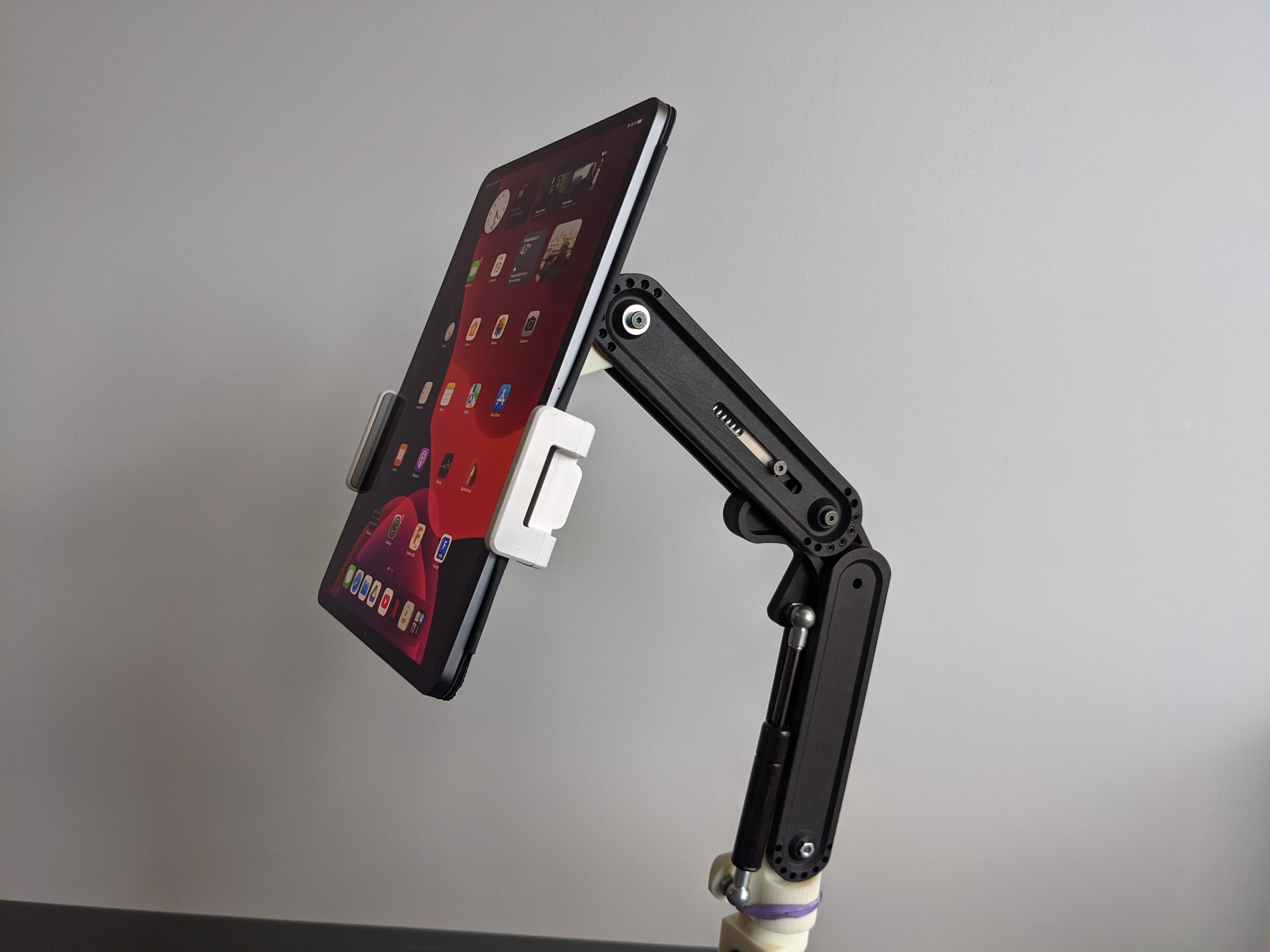
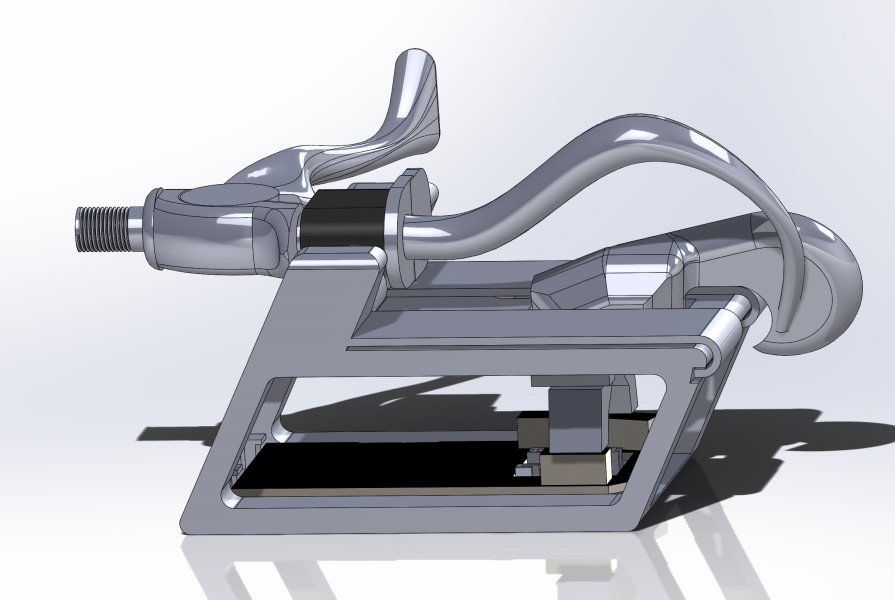
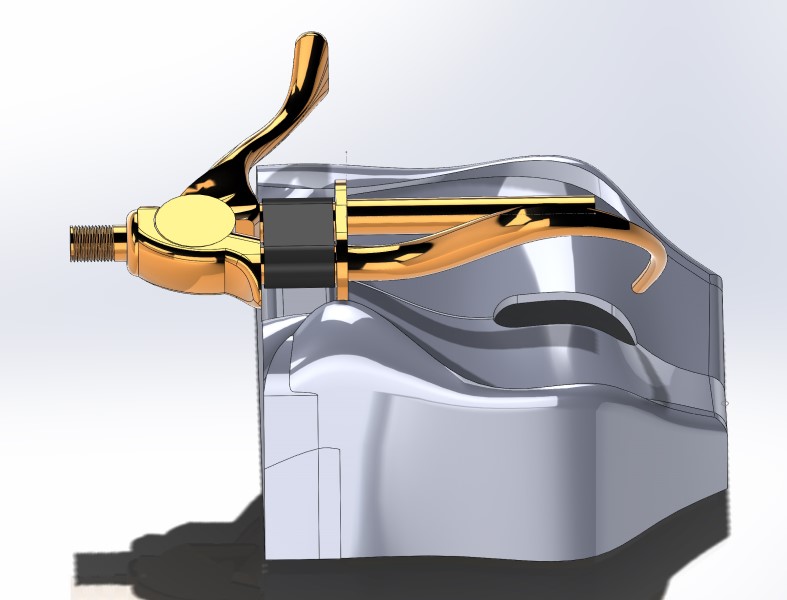

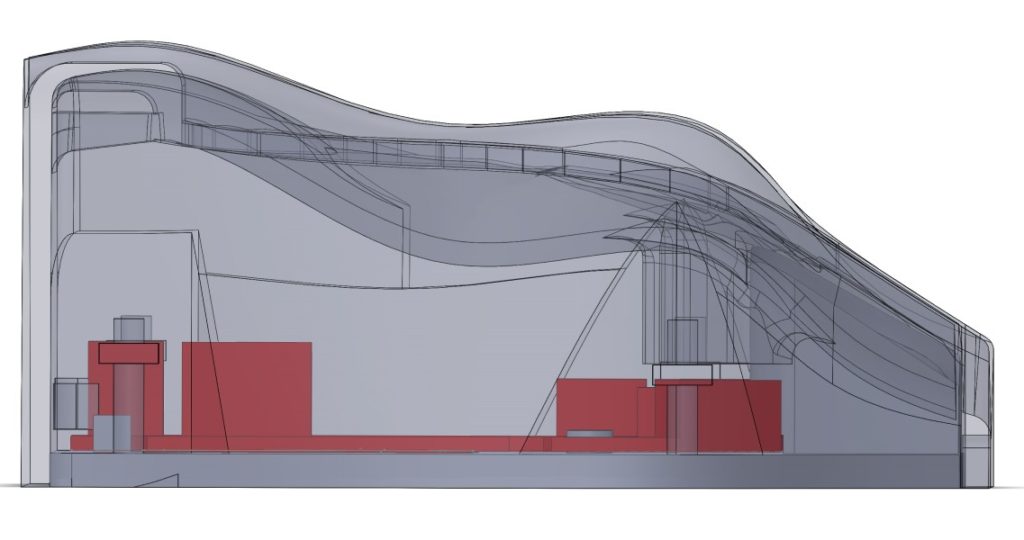

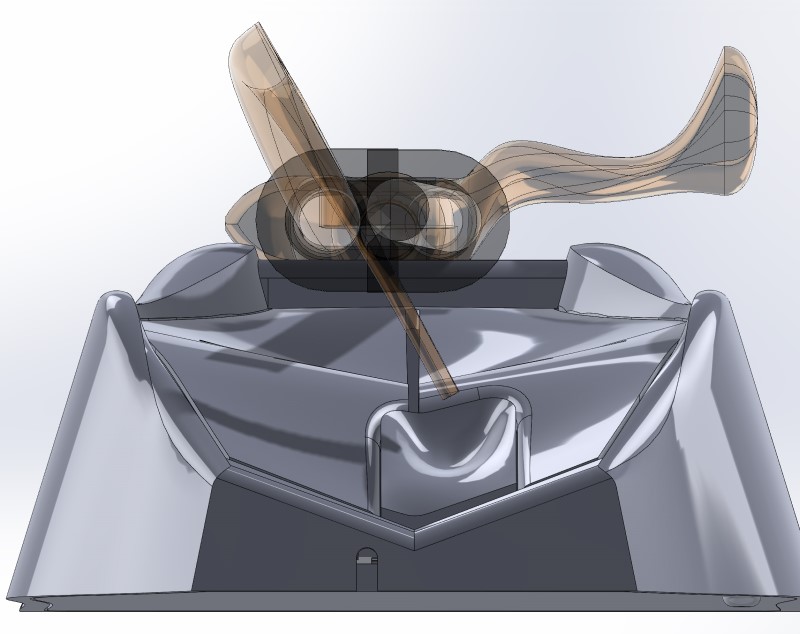

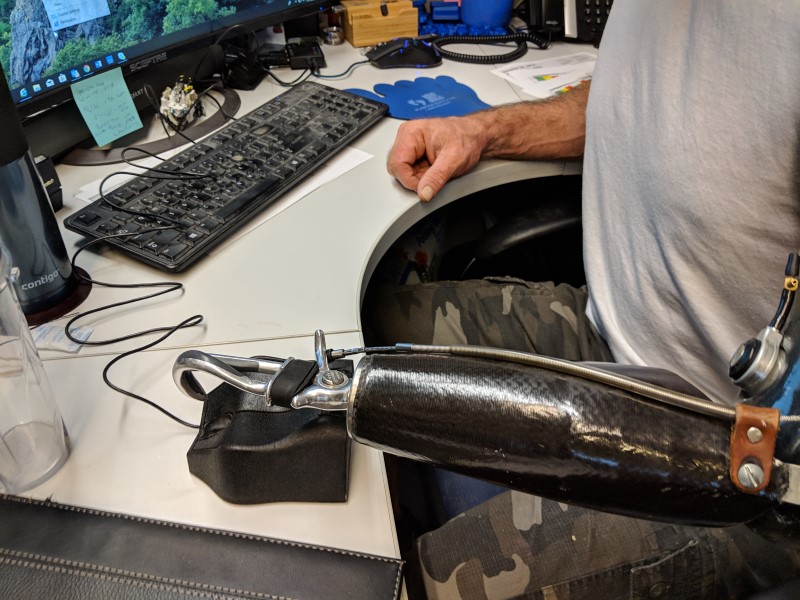
Patent issued May 2021: US D918,911
Concept: Dr. Rory Cooper, Director, Human Engineering Research Laboratories (HERL)
Design: Aaron Anderson with guidance from Dr. Garret Grindle (HERL), and Zachary Anzelone (University of Pittsburgh office of Prosthetics and Orthotics)
Prototype produced: Aaron Anderson with guidance from Benjamin Gebrosky (VA)
User testing: University of Pittsburgh Department of Prosthetics and Orthotics volunteer
Invention Disclosure Filed 2019 – Dr. Rory Cooper, Dr. Garrett Grindle, Aaron Anderson, Zachary Anzelone
Patent Application No: 16/801,263 Computer Pointing Device
VA ID 2018-348
Pitt 04741
The Hosmer 5X is still one of the most common terminal devices for amputees because it provides flexibility and grip strength not afforded by other more natural looking prostheses.
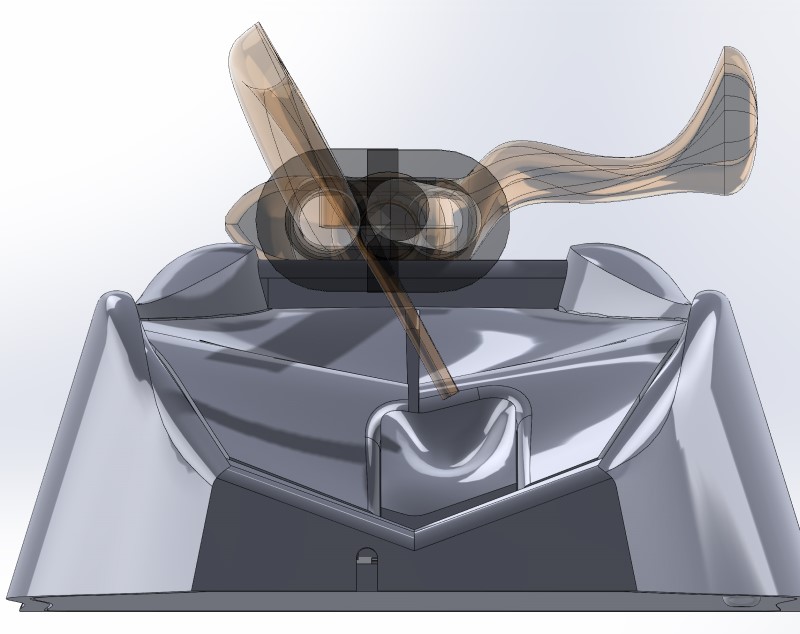
I was fortunate to work on the CAD modeling and physical production of the first 5 prototype versions of this idea and learned a great deal about the Hosmer device and the interface that controls its grip motions. Working with the school of Prosthetics and Orthotics at University of Pittsburgh and some very gracious volunteer patients who agreed to give us feedback on designs we were able to create a prototype that made it easier to use a computer mouse with a Hosmer terminal device.
Dr. Rory Cooper, director, Human Engineering Research Laboratories, had the idea to facilitate using a computer mouse while using the most common Hosmer “hook”. The initial brief was to create a mouse with a joystick-like protrusion on the top to give the user a method of grasping the mouse for lateral movement. Prototypes 1-3 utilized this functional model but this proved difficult to grasp and release. Prototype 4+ utilized a saddle that supported the weight of the limb and the terminal device and used friction to provide enough grip to move the mouse laterally.
Prototype 5 incorporated the saddle design and after consulting with a user who mentioned that their level of effort at using previous mice was high and they needed to be able to rest not just their wrist on the saddle, but also the tip of their hook on a ‘non-clicking button’ of sorts. Providing a place for the hook to rest without impeding interaction with the computer was achieved by creating a pocket that the hook can stably rest in while not impeding lateral movement. This addition reduced the amount of work the user had to do to prevent unwanted clicking of the right and left buttons on the mouse housing. The pocket was coated with an elastomer coating to enhance control.


